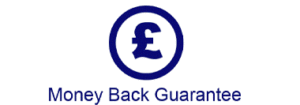Are trade marks an asset?
Trade marks are intangible assets and can include items such as brand names, logos, jingles, designs and colour schemes.
Though intangible in nature, a successful trade mark can play a crucial role in setting apart a company’s goods and services from those of its competitors and creating a reputation for quality and reliability.
A crucial part of creating a successful trade mark is knowing where it should appear on your balance sheet and how it relates to other accounting concepts.
This article will look at some of the most important issues while Trademark Eagle’s team of in-house specialists will be delighted to provide bespoke advice should you have any queries.
Is a trade mark an asset or an equity?
A trade mark is regarded as an asset and when owned by a company it often features on the asset/balance sheet.
This is a different concept from an equity, which is an ownership stake that someone holds in an organisation.
Is a trade mark a fixed asset?
Trade marks are generally considered to be invisible or intangible assets but may be of considerable value to a business due to their ability to differentiate its goods or services and so help it build a strong market position.
A fixed asset is a physical long-term asset that a company owns and uses in its operations to create revenue and profit.
Examples of fixed and current assets include buildings, machinery, vehicles and short term investments. The expectation would be that such items would be utilised by the business for a period of more than a year.
While invisible assets and fixed assets are different in nature, both are classed as noncurrent assets (assets that are not easily converted to cash within a year) for accounting purposes.
This category also includes long-term investments.
What are current assets?
A company’s current assets are those items which it owns and expects to convert to cash within a year.
Examples of current assets include raw materials, stocks of finished products, and short-term financial investments.
Why is it important to protect trade marks?
While trade marks are classed as intangible assets their value to a company can exceed that of many of its fixed and current assets due to their ability to establish a customer base.
Moreover, businesses often devote considerable time, money and enterprise to creating successful trade marks and so it is imperative that they enjoy exclusive rights to the resulting benefits.
By owning registered trade marks their owners can prevent adoption of similar/identical marks in the same commercial sector, ensuring protection of their investment in their valuable trade mark assets.
UK law provides protection in the form of the Trade Marks Act 1994 but it’s vital that you register your trade mark and renew it when required.
How can Trademark Eagle help me?
We have a wealth of experience in all matters relating to trade marks and can offer tailor-made advice on how to protect them and how to put in place safeguards to prevent others from impinging on your rights.
Our team has an excellent reputation for customer service – please get in touch to find out how we can help you.
Call: 01223 208 624
Email: enquiries@trademark-eagle.com
Or complete our online contact form.

